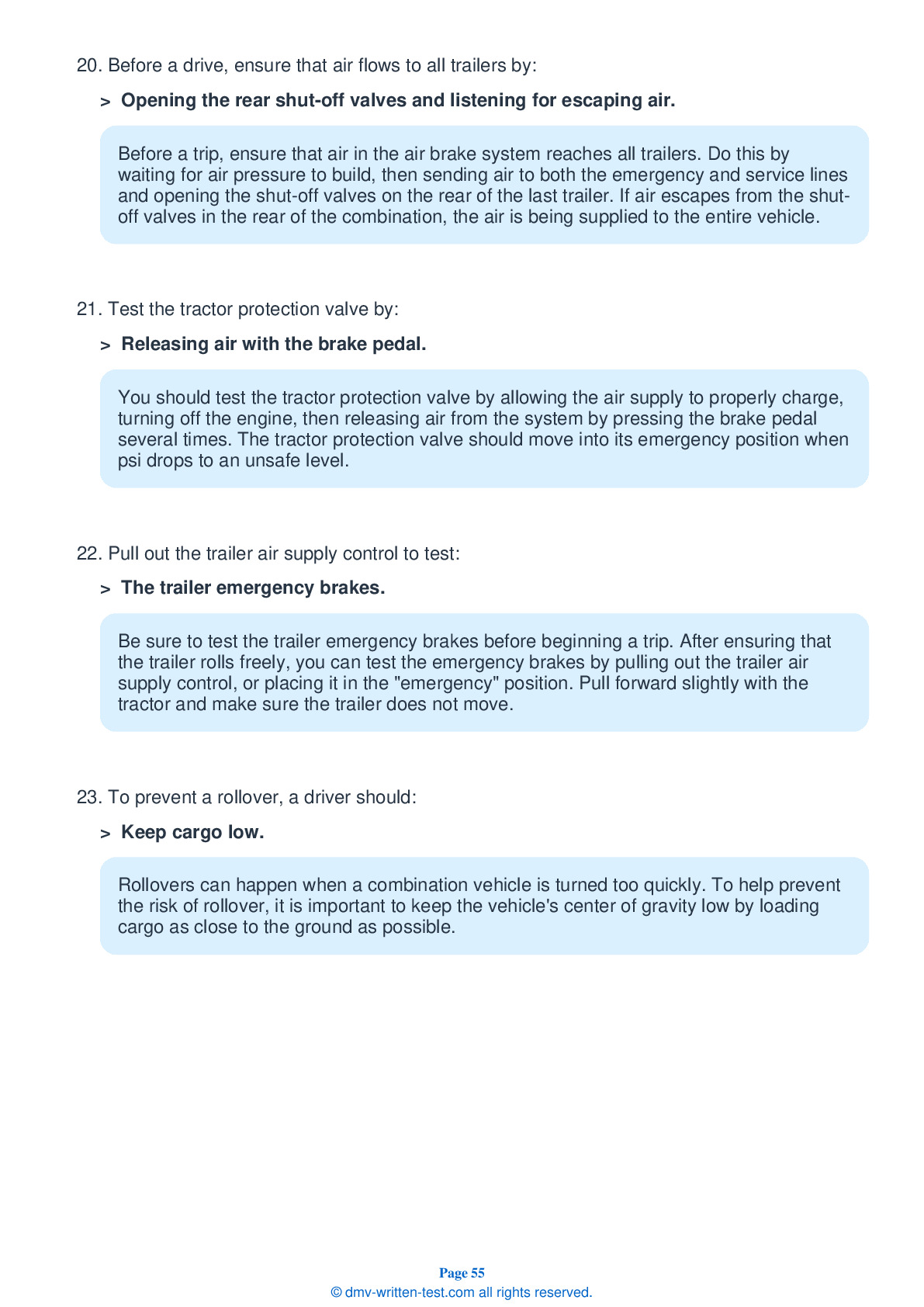Combination
All applicants who are applying for a Class A CDL should be prepared to take the Combination test. This test covers information found in Section 6 of the Minnesota Commercial Driver's Manual. Section 6 provides the information needed to safely operate tractor-trailers, doubles, triples, and straight trucks with trailers. The test is made up of 20 multiple-choice questions, and applicants will need to correctly answer a minimum of 16 questions to pass. The Combination test is not a replacement for the Double/Triple endorsement test.
Number of Question
Passing Score
8. If an air supply control is in its "emergency" position:
Explanation
Tractor protection controls in older vehicles may be operated by levers instead of knobs. If an air supply control is set in its "emergency" position, the air supply will be stopped and the trailer emergency brakes will be applied.
9. If you press the tractor air supply control and your trailer's spring brakes do not release, you should:
Explanation
It is important that all of a vehicle's equipment is in proper working condition before beginning a trip. If a trailer's spring brakes do not release when you push in the tractor air supply control, you should make sure the air line connections are properly attached and sealed.
10. In a vehicle equipped with an automatic tractor protection valve, the valve will pop out when:
Explanation
In vehicles equipped with an automatic tractor protection valve, the valve will pop out if air pressure drops to a level between 20 and 45 psi. When the valve pops out, the protection valve will close, stopping the flow of air.
11. A combination vehicle has ____ air line(s).
Explanation
Every combination vehicle has two air lines: the service line and the emergency line.
12. When driving while pulling trailers, you should:
Explanation
You should always steer gently and smoothly while pulling a trailer. Making sudden steering moves could cause the trailer to tip over.
13. When a combination vehicle goes around a corner:
Explanation
When a vehicle goes around a corner, the rear wheels follow a different path than the front wheels. This is called off-tracking. This effect is especially pronounced on vehicles with trailers.
14. If a trailer begins to jackknife, you should not:
Explanation




